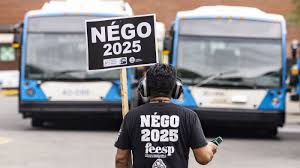
Introduction
The recent STM strike has sent shockwaves through Montreal’s public transportation system, bringing various aspects of city life to a halt. As a significant player in the public transit sector, the STM (Société de transport de Montréal) is responsible for thousands of daily commuters. Understanding the implications of this strike is crucial for residents who depend on reliable public transport to navigate the city.
Details of the STM Strike
The strike began on October 1, 2023, following failed negotiations between the STM and its union, representing drivers and maintenance staff. The main issues have centered around wage increases, working conditions, and job security, which have been points of contention for several months. Union representatives claim that employees have not seen a pay increase that reflects the rising cost of living and inflation rate, urging the STM to offer more competitive wages to retain essential workers.
The STM, on the other hand, argues that current financial constraints limit their ability to comply with the union’s demands. City officials have stepped in, calling for both parties to return to the bargaining table in hopes of reaching an agreement. However, service disruptions have already begun, affecting bus and metro operations, with many commuters left scrambling for alternative transportation.
Effect on Montreal Commuters
According to recent estimates, over 1.3 million rides are taken daily on the STM system, making the impacts of the strike deeply felt. Many commuters have reported significant delays and overcrowding on the remaining services, which are running at reduced capacity. Businesses in downtown Montreal are also feeling the pinch, as pedestrian foot traffic has decreased significantly due to the unscheduled changes in transit availability.
In response, city officials are exploring temporary measures, such as increasing the presence of city buses and implementing partnerships with ride-sharing services to alleviate the burden on commuters. However, these solutions are seen as stop-gap measures rather than long-term repair.
Conclusion
The STM strike is more than just a dispute over wages; it highlights broader themes of labor rights and public service responsibilities. As negotiations continue, stakeholders are keeping a close eye on how this situation unfolds. Should an agreement not be reached soon, momentum may build behind calls for other public sector unions to rally in support of the STM workers. The outcome will not only determine the future of STM services but also signal to workers city-wide how labor disputes might be resolved in the future.



